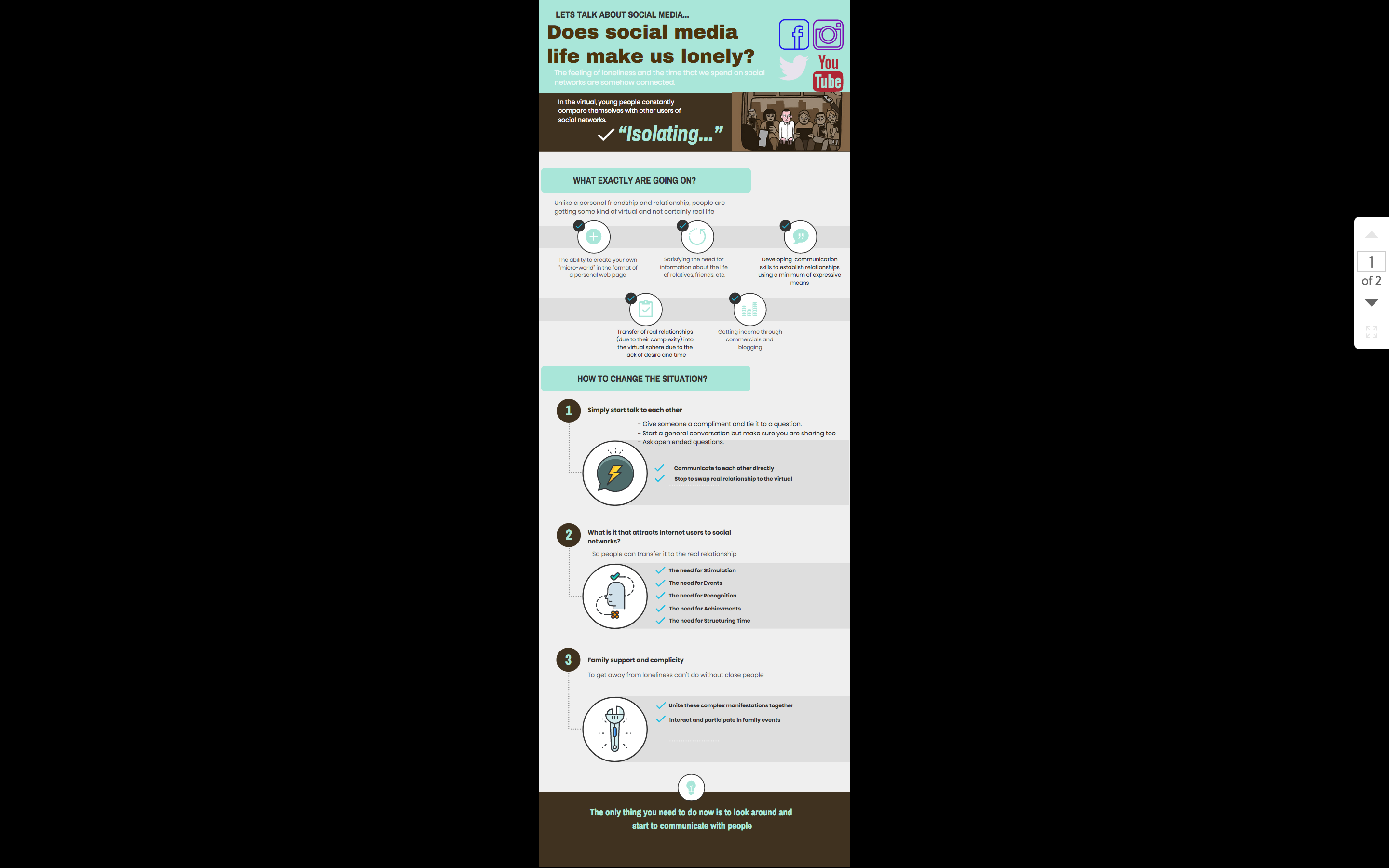
After I finished the PROJECT#2, I thought the Topic and arguments that I made, were discussed in full. Therefore in PROJECT#3 I realized, that the same Topic could start manifest with different transfusions. I chose an Infographic to connect all of the ideas I used previously with the Visual Aid I can create. Recently, Visual Aid became more common in understanding and achieving needs of the audience. Podcasts, Video Clips, Infographics allow us to put all of the information we want in more understandable way for the young people. Like Video Resume, Infographics allows not only to discuss, but actually to SEE arguments. As of my first experience to design an Infographic, I can say it allows to stay creative or formal, doesn’t matter which way you need, you just chose it. An Infographic needs to stay informative, even if it’s not official, so by creating an examples and arguments, it could be useful.
Nowadays, in educational system we can track more and more non-traditional styles and ways to present information. I believe, tech innovations and exploring of the social media, the main reasons of it. The whole system and understanding on access of the information are changed.
Designing an Infographic specifically, doesn’t require special skills. There are a lot of Templates and Web sites that allows you to make it for free, using their Test Bank of images and graphics. So all that you need an idea and vision how it supposed to look at the end. I made my Infographic in two drafts, and left a second as a primer. Over all, Project#3 was interesting and fun, even the fact that I was confused at the beginning.
Working towards goals to achieve the vision
- Specific: When specifying a goal, there should be no room for uncertainty.
- Measurable: Measurability helps a lot with specificity. Wherever possible, need to use quantifiable measurements.
- Achievable: Reaching for the stars sounds great, but do you have what it takes to build a rocket ship? Set challenging goals but don’t set yourself up for failure.
- Realistic: Realism and achievability are closely related. That’s why you need to look at where you are now before you can decide what you plan to achieve.
- Time-bound: Naturally, the time you set must also be achievable and realistic.


